Each year as a means to help support the mega-beast known as the Writers’ Police Academy, the event features a raffle and silent auction. It’s fun. Really fun.
Well, since we tend to offer some unusual items not typically available anywhere else, and after receiving so many requests to allow non-attendees to participate in the auction, we pondered the idea and, in 2016, decided to offer a few items for sealed bids. The move was a huge success, thanks to each of you!
Sealed Bid Auction – Open to Everyone!
This year we’re offering five exciting items for sealed bids. These are available to the public, therefore anyone and everyone is welcome to participate.
How Do I …
- To win the prize/item you so badly desire, simply send your bids to 2017WPAuction@gmail.com.
- Type BID in the subject line along with with the name of the item, e.g. BID Guitar or BID Script or BID Critique, etc.
- In the body of the message please state the dollar amount of your bid (e.g. – “My bid for the signed guitar is $1 Zillion Dollars.”).
Also, please include your full contact information.
Bids will remain a secret until bidding closes at midnight PST, Saturday August 12, 2017. You need not be present at the WPA to win. Attendees of the 2017 may submit sealed auction bids as well, and the same rules apply.
Sealed bids are in addition to the raffle and silent auction items available at the event. You must be present to participate in the raffle and silent auction.
And now … The Items …
Oak Ridge Boys – Signed Guitar and CD
 A guitar and CD signed by the legendary Grammy-winning Oak Ridge Boys. This unique item is a wonderful addition to any room in the house. I have one in our den, a gift from my wife who, by the way, spent big bucks for it at the auction. Superstar author Lee Child placed the winning bid a few years ago and he, too, has one of these signed beauties in his Manhattan office. WPA instructor/Detective Marco Conelli is another owner of one of these prized guitars. (In case you didn’t know, Marco is also a singer-songwriter/frontman for his own band in NYC).
A guitar and CD signed by the legendary Grammy-winning Oak Ridge Boys. This unique item is a wonderful addition to any room in the house. I have one in our den, a gift from my wife who, by the way, spent big bucks for it at the auction. Superstar author Lee Child placed the winning bid a few years ago and he, too, has one of these signed beauties in his Manhattan office. WPA instructor/Detective Marco Conelli is another owner of one of these prized guitars. (In case you didn’t know, Marco is also a singer-songwriter/frontman for his own band in NYC).
Murder, She Wrote – Signed Script
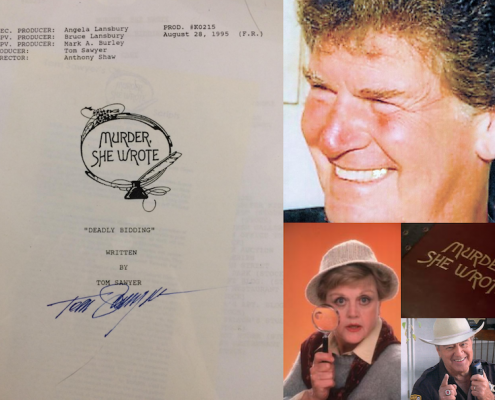 Murder, She Wrote script signed by head writer/showrunner Thomas B. Sawyer. Tom also served as Head Writer/Showrunner or Producer on 15 network TV series. He has sold and written TV movies, 9 series pilots, 100 episodes, both comedy and drama. This script is a must-have prize of epic proportion, especially so for Murder, She Wrote fans, and writers of all genres.
Murder, She Wrote script signed by head writer/showrunner Thomas B. Sawyer. Tom also served as Head Writer/Showrunner or Producer on 15 network TV series. He has sold and written TV movies, 9 series pilots, 100 episodes, both comedy and drama. This script is a must-have prize of epic proportion, especially so for Murder, She Wrote fans, and writers of all genres.
Seat at a “For Law Enforcement ONLY” Gang Conference
This is HUGE! We have two seats available to a “law enforcement only” gang conference.
 That’s right, for the first time EVER, two lucky writers will have the opportunity learn and train side-by-side with top police investigators, all at a conference where outsiders are not permitted. That’s right, you’d be the ONLY writer privy to insider information about developing and maintaining confidential informants—gang-related, so this is especially tough for cops—human trafficking, how gangs infiltrate communities, Asian gangs, gangs and social media, and much, much more. This is a rare and EXCITING OPPORTUNITY that’s not available to the public.
That’s right, for the first time EVER, two lucky writers will have the opportunity learn and train side-by-side with top police investigators, all at a conference where outsiders are not permitted. That’s right, you’d be the ONLY writer privy to insider information about developing and maintaining confidential informants—gang-related, so this is especially tough for cops—human trafficking, how gangs infiltrate communities, Asian gangs, gangs and social media, and much, much more. This is a rare and EXCITING OPPORTUNITY that’s not available to the public.
A Complete Pond for Your Home

Cool indoor/outdoor pond.
A pond! No, your eyes are not playing tricks on you. We have available for you a wonderful indoor/outdoor pond. It stands appr. 2-feet tall and appr. 4-feet across (appr. 40-50 gallons). The pond comes with everything you need. Well, you’ll have to supply water, plants, and fish, of course, but the rest—pump, liner, filters, plant baskets, light kits, etc.—are included in this package. Denene and I have one and we love everything about it, from the soothing sounds of the fountain to watching and feeding the goldfish to watching hummingbirds bathe beneath the fountain spray. This pond (retail value over $500) is absolutely COOL! Ours has provided countless hours of joy for us, especially seeing hummingbirds zip in to drink from the fountain spray and to bathes beneath the shower. It’s perfect for indoors as well. We’ve arranged to have the pond shipped directly to you from the warehouse (Assembly is required – takes approximately one hour and is remarkably simple. Hey, I did it).
Manuscript Critique by Top Harlequin Editor!
Ann Leslie Tuttle, Senior Editor at Harlequin Books is offering a critique of a synopsis and first chapter (up to 25 pages). How exciting, and what a wonderful means to place your work on the desk of a top editor!
 ABOUT ANN LESLIE TUTTLE
ABOUT ANN LESLIE TUTTLE
Ann Leslie is actively acquires for HQN Books, MIRA and Harlequin/Silhouette Books, she is especially interested in finding paranormal romance and commercial literary fiction. Ann Leslie has acquired trade, hardcover and mass market titles with critical and bestselling potential. Edits an diverse author base, including NYT, USA Today and international bestselling authors Sylvia Day, Julia London, Megan Hart, Vanessa Fewings, Lisa Renee Jones and Rachael Johns. She manages lines of contemporary romance and special projects, including e-books. She is a popular speaker at writer conferences, including the Australia and New Zealand conferences in 2015.
**FINE PRINT**
The manuscript will be of standard manuscript formatting. The names of the winners will be provided by the WPA to Jenna Kernan who will let Ann Leslie Tuttle know to expect your material for critique
*This prize was acquired by author Jenna Kernan for WPA.
When does this cool opportunity begin?
Right NOW! Yes, you are free to begin submitting bids this very moment. So … GOOD LUCK!! And, yes, we still have a few available spots at the Writers’ Police Academy. See you soon.
Special Notice!
To add to the fun, we will also be hosting a live auction of a few special items. Tami Hoag (that’s right, THE Tami Hoag) is the 2017 auctioneer. She is joined by author JD Allen. This is going to be a real hoot! Details coming soon.
Proceeds are combined with overall WPA funds and go toward overall event expenses, the opening ceremonies (featuring the blessing of the WPA by the Oneida Nation dancers, Miss Oneida, tribal elders), and a student scholarship funded by the WPA. Remember, the WPA takes place on the Oneida Indian Reservation (hotel, academy, and college).
*Winners will be notified by email. We will attempt to contact winners three times (one every other day, starting on August15, 2017), so please check your spam folders. If we do not receive a reply with five day after the third message is sent we will move on to the next highest bidder, and so on until the prize is claimed. Funds to secure bids must be made via WPA PayPal. Once we’ve established contact with the winners we will provide payment details. Items will ship/can be claimed once payment is received.


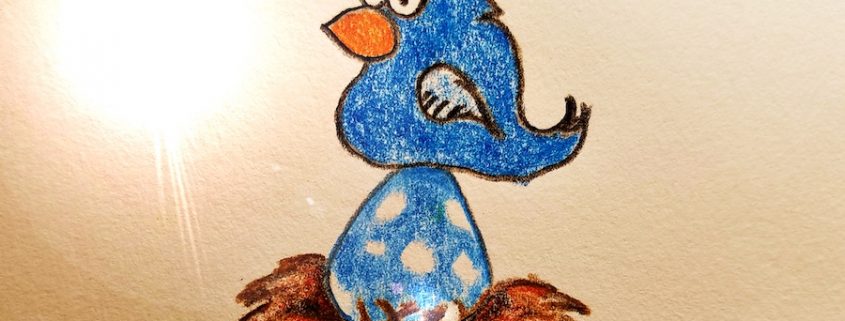
 But it was easier to catch chicken thieves back then than it is to catch modern day bird bandits, the bad guys who poach or kill birds of prey and/or steal their eggs. The eggs, by the way, are most often sold to collectors known as “eggers.”
But it was easier to catch chicken thieves back then than it is to catch modern day bird bandits, the bad guys who poach or kill birds of prey and/or steal their eggs. The eggs, by the way, are most often sold to collectors known as “eggers.”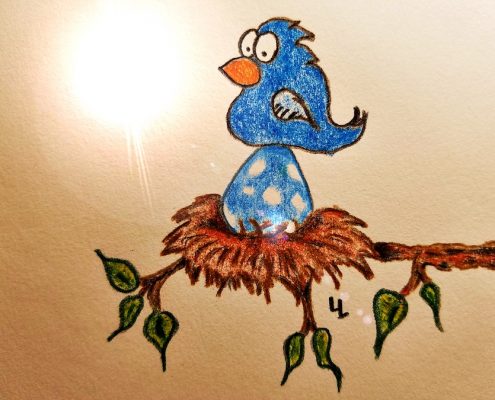

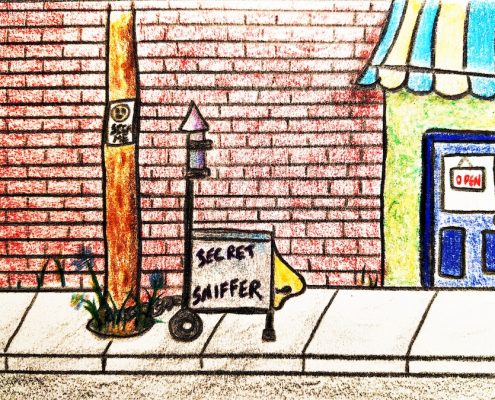
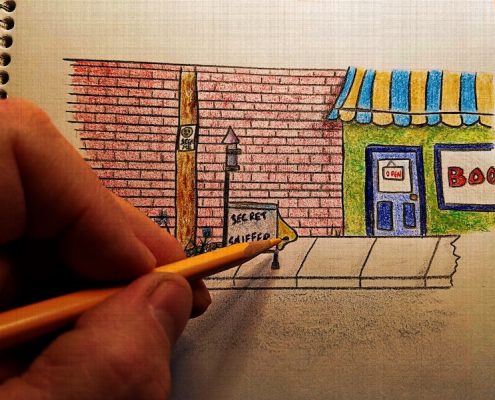

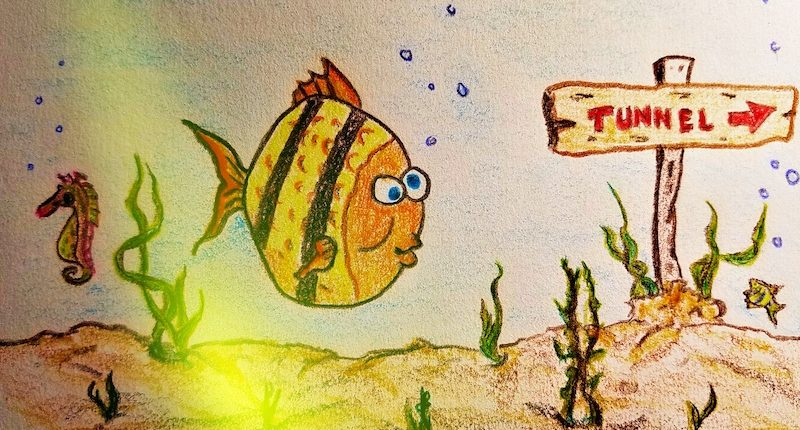 It’s sort of like a puffer fish in that when danger is sensed, the plug, like the puffer fish, inflates to ward off the trouble. When deployed (automatically or manually), the plug falls from it’s storage compartment and inflates until it snugly fills and seals the tunnel opening. I understand that until the device is approved and in place and ready to work, puffer fish volunteers, among other portly swimming future-filets, are on the way to major waterside cities to assume the roles of temporary tunnel-pluggers.
It’s sort of like a puffer fish in that when danger is sensed, the plug, like the puffer fish, inflates to ward off the trouble. When deployed (automatically or manually), the plug falls from it’s storage compartment and inflates until it snugly fills and seals the tunnel opening. I understand that until the device is approved and in place and ready to work, puffer fish volunteers, among other portly swimming future-filets, are on the way to major waterside cities to assume the roles of temporary tunnel-pluggers. The purpose of this new training—to expose K-9 teams to current real-world conditions—is to further enhance the dogs’ ability to detect the presence of bombs/explosives. As you can see (right), the animals selected for the program are extremely smart, fearless, and well-schooled.
The purpose of this new training—to expose K-9 teams to current real-world conditions—is to further enhance the dogs’ ability to detect the presence of bombs/explosives. As you can see (right), the animals selected for the program are extremely smart, fearless, and well-schooled.

 Either bad guys are getting faster these days, or my old legs have decided they no longer care if we catch them or not. And my breathing … wow, when did all that wheezing start? I used to be able to run ten miles without feeling as if my inside were about to explode into tiny bits of fire.
Either bad guys are getting faster these days, or my old legs have decided they no longer care if we catch them or not. And my breathing … wow, when did all that wheezing start? I used to be able to run ten miles without feeling as if my inside were about to explode into tiny bits of fire. The boss tells me there’s an opening in the evidence room. The job consists of taking stuff officers bring in, assign it a number, and then stick it on a shelf until someone comes by to pick it up. Sometimes they do, sometimes they don’t. That’s the job. Day after day after day. She wants me to take it. I don’t want to. Can’t really make out all the fine print on those evidence labels. I guess my eyes are just tired after all those years of reading and writing detailed reports.
The boss tells me there’s an opening in the evidence room. The job consists of taking stuff officers bring in, assign it a number, and then stick it on a shelf until someone comes by to pick it up. Sometimes they do, sometimes they don’t. That’s the job. Day after day after day. She wants me to take it. I don’t want to. Can’t really make out all the fine print on those evidence labels. I guess my eyes are just tired after all those years of reading and writing detailed reports.